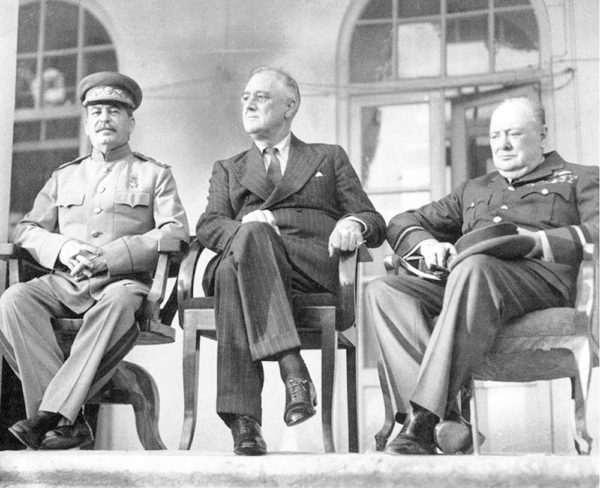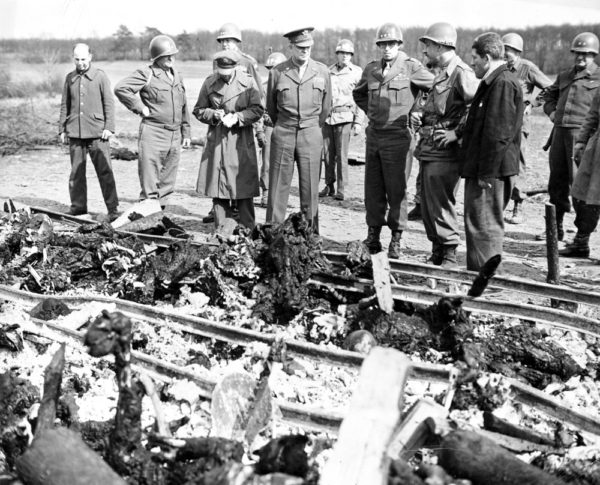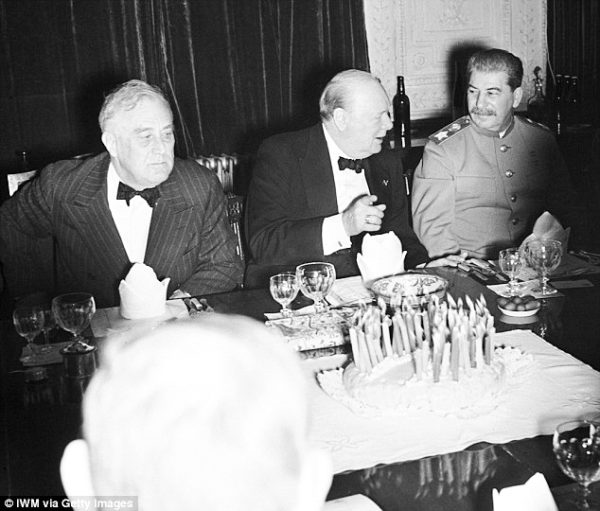Do you remember the 1971 fictional story, The Jackal, written by Frederick Forsyth? It was about an assassination attempt on General Charles de Gaulle and based on the actual 1962 unsuccessful attempt on the general’s life. Today’s story takes place less than twenty years earlier during World War II however, this time, the assassination targets were the Allied leaders, commonly known as the “Big Three.”

Did You Know?
Did you know that twenty-two percent of Millennials surveyed several years ago knew nothing about the Holocaust and an amazing sixty-six percent of them had never heard of Auschwitz? Frankly, I find those statistics to be unbelievable and clearly, it is a sad commentary on our education system. I’m the first one to stand up for teaching more of the three R’s (reading, writing, and arithmetic). However, I cannot comprehend that we ignore teaching our children about the Nazis and the twelve years of their systematic murder of eleven million people. Aren’t there some very important basic and fundamental lessons here to be learned?
We will very shortly reach the time when the last World War II participant dies. This is true of Nazi concentration camp and extermination camp survivors. When these people are gone, who will tell their stories to future generations? Allied troops demanded General Eisenhower tour the liberated Buchenwald Ohrdruf concentration camp (the first camp liberated by the Americans). Eisenhower was so appalled that he ordered photographers to come in and document the atrocities. The general later said that one of the reasons he ordered photographic documentation was to prevent future generations from being able to deny the Nazis’ crimes.

When Sandy and I toured the former Nazi rally grounds at Nuremburg, we had the opportunity to visit the nearby museum. There were no attempts to whitewash what the Germans and the Nazis did during the twelve years of the Third Reich. The museum was organized in such a way as to take you through the journey of how and why these events evolved. The museum is considered so important that after a young man or woman enters the German military, they are immediately required by law to take a tour of this museum.
Thirty-years ago, Jack was a client of mine and he was a brilliant businessman who lost some of his family during the Holocaust. One day on the way out to see his new manufacturing facility, we had a discussion about the Holocaust. At some point, I mentioned it was so horrific that it could never happen again. Jack slammed on the brakes and once he pulled the car over to the side of the road, he turned to me and sternly said, “Stew, don’t you ever think something like this couldn’t happen again. It can and it will should the right circumstances and people present themselves. We must study how and why this happened because that is the only way we have any hope of preventing it again.”
The creation of Holocaust museums and memorials were driven primarily by Holocaust survivors. Education programs have relied on first-hand stories from these survivors. When these people are gone, who will step up and ensure no one ever forgets?
Forgive but never forget.
The Tehran Conference
The Tehran Conference was the first of the major meetings involving the “Big Three” (United States, Britain, and the Soviet Union). Roosevelt, Churchill, and Stalin met in the Soviet Embassy in Tehran between 28 November and 1 December 1943. Despite different agendas, the primary outcome was agreement that a second front would be established against the Nazis in May 1944. This was a “win” for Stalin who had been pushing for this since the Nazis had invaded the Soviet Union in mid-1941. The second front would divert German troops away from the east. One of the overriding factors of the conference was the security of the three Allied leaders. The night before the meetings began, Stalin’s right-hand man, Vyacheslov Molotov, informed British and American representatives that an assassination plot against the Big Three leaders had been uncovered. A Soviet agent, Nikolai Kuznetzov (1911-1944), working undercover while posing as a Wehrmacht officer had been tipped off by a German officer who had had a little too much to drink. Click here to watch the video The Big Three in Teheran (1943).

